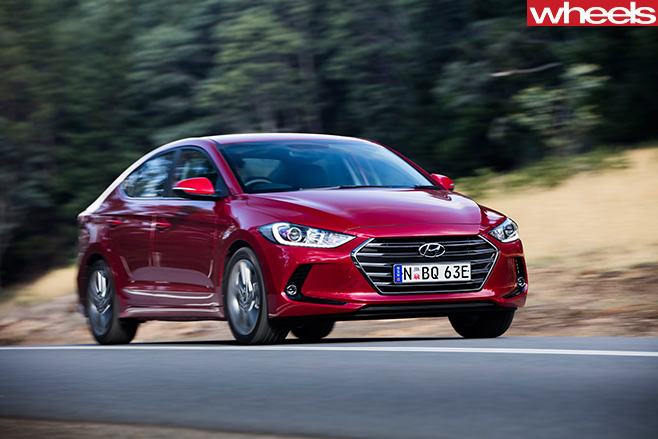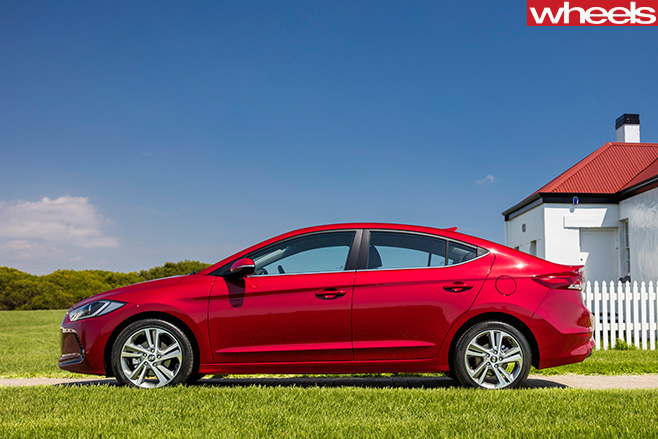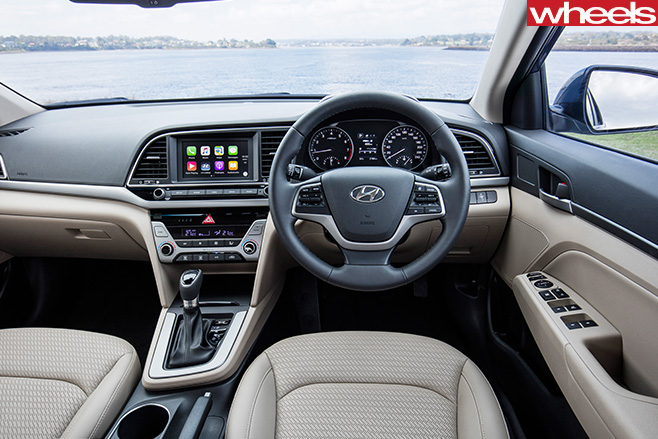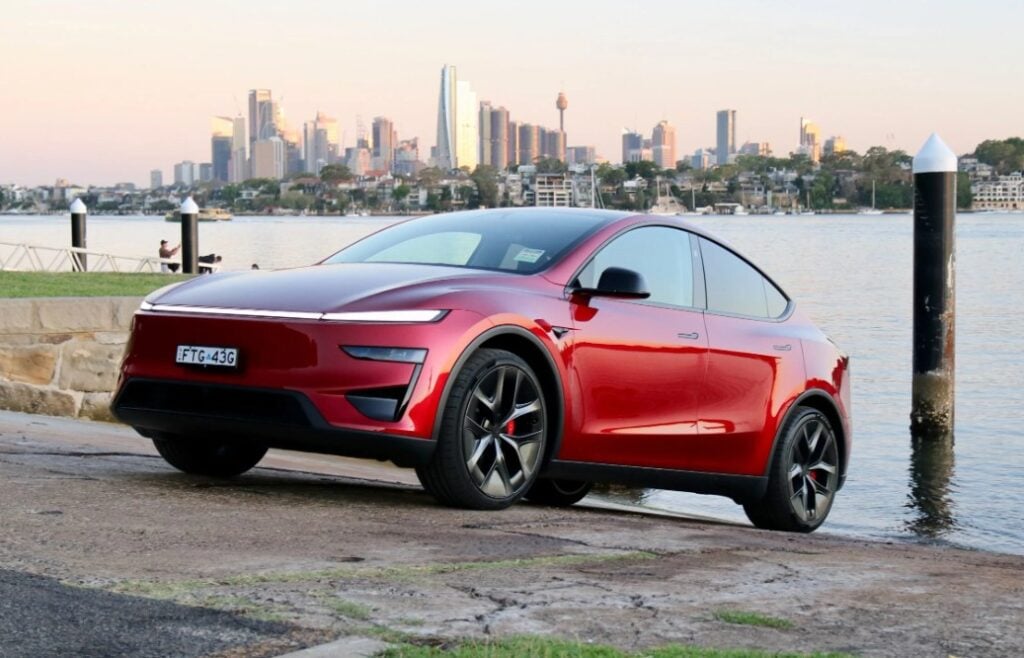A newfound driving maturity makes the Elantra one of Hyundai’s more convincing offerings. But it comes with compromises.
WHAT IS IT? This Elantra begins the sixth generation of Hyundai’s longest running model. It is a sedan that competes with some of the small-car heavy hitters.
WHY WE’RE TESTING IT The Hyundai Elantra is all new, from the engine and chassis to the interior and body. It’s the first newcomer for Hyundai in 2016, and it precedes the arrival of a new Hyundai i30 hatchback by at least a year.
MAIN RIVALS Toyota Corolla, Mazda 3, Subaru Impreza, Ford Focus, Holden Cruze.

PLUS: Refined and relatively quiet; perky engine; plenty of space; decent value. MINUS: Bland interior; mild suspension booming; auto transmissions lacks sporty smarts; no AEB.
THE WHEELS REVIEW IT MAY be Hyundai’s biggest selling model globally, but the Elantra is up against it in Australia, where four-door sedans are being swallowed steadily by SUVs.
On paper, the sixth generation Elantra does not look to be a shaker-and-mover. Fuel use has increased, the boot is smaller, and prices have edged up.
The reality is more appealing, starting with a crisper design that places the emphasis on the sloping roof line rather than on that apparent turn-off for buyers, the boot.

Open it up and it approaches 6000rpm before slurring the change into second. Peak revs increase in higher gears to the point where you can eke 6500rpm out of it. The sound is a vocal companion but without the thrashiness of previous small Hyundais.

Refinement has made a big leap, eschewing the rawness of the previous Elantra – and its i30 hardback sibling – for a more hushed in-cabin experience.
There’s a newfound maturity to the dynamics, too. Put that down to the stiffer chassis: the amount of ultra-high tensile steel has more than doubled, now making up 53 percent of the body, in turn helping push torsional rigidity up some 30 percent. The suspension, which was tuned extensively in Australia, has also been redesigned for better control, something instantly obvious on the challenging Tasmanian roads of the media drive.

The tyres – 16s on the Active and 17s on the Elite – are well suited to the relaxed nature of the car, delivering respectable grip but ultimately squealing at punishment. The steering has a reassuring meatiness to it, but initial accuracy is dulled by the profile of the tyres – more so on Active with its 16s.
Inside, there’s a mass of grained plastics and fake silver streaks for what is a bland look. Fortunately, the more convincing silver streak around the touchscreen adds a dash of flair, as does a centre stack that’s tilted towards the driver.

There’s brilliant adjustability to the front seats, ensuring tall drivers are blessed with legroom. The rear, though, loses points for headroom, which tapers off with the sweep of the roof. The middle rear seat, too, is a temporary affair thanks to its narrowness. But the rear air vents are a plus.

The Elite ($26,490 as an auto only) throws in some leather, rain-sensing wipers, smart key entry, dual-zone climate and 17-inch alloys.
Those prices, though, are above the discount deals that have seen Hyundai command more small car share recently. The challenge for the Elantra is repeating that in a declining segment.
SPECS Model: Hyundai Elantra Elite Engine: 2.0-litre 4cyl Max power: 112kW @ 6200rpm Max torque: 192Nm @ 4500rpm Transmission: 6-speed auto Kerb weight: 1355kg 0-100km/h: NA Price: From $26,490 On sale: Now
MORE: Hyundai Elantra Range Review MORE: Hyundai Elantra Specs, Range & Price





